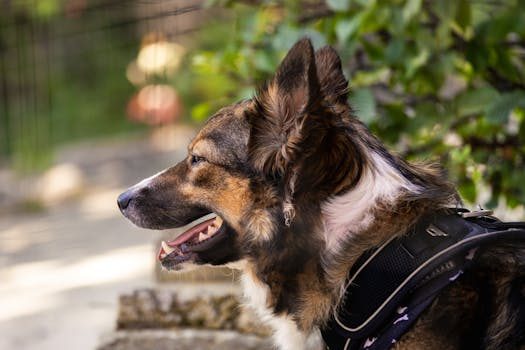Traveling with exotic pets can be a unique and enriching experience for pet owners who love to explore the world with their non-traditional companions. However, it comes with a set of particular challenges that require careful preparation and a deep understanding of the rules and regulations involved.
Traveling with Exotic Pets: A Guide to Rules and Regulations
When you decide to embark on an itinerary for traveling with exotic pets, the first step is to familiarize yourself with the various rules and regulations. Each airline has different policies, and your pet’s species may be subject to specific legal requirements, especially when traveling internationally. Ensure that you have all the necessary health certificates and understand the quarantine laws that apply to your destination.
Certain pets might need to be kept in special animal crates that comply with International Air Transport Association (IATA) regulations. Additionally, some countries have strict controls on the import and export of exotic species to prevent the spread of diseases or to protect native wildlife.
Consider reaching out to pet relocation services that specialize in exotic animals for expert guidance. They can help navigate the intricate details of paperwork and logistics, ensuring a smooth experience for you and your pet.
The Art of Traveling with Exotic Pets: Tips for a Smooth Journey
To ensure a smooth journey for both you and your pet, plan ahead and be meticulous with your preparations. A packing essentials list for exotic pet travel is indispensable, including items like your pet’s favorite toys, familiar bedding, and any necessary medication. Keep in mind the climate of your destination and how it might affect your pet.

It’s crucial to maintain a stable environment for your pet, so invest in a high-quality carrier that can help control temperature and offers enough space for them to move around comfortably. Hydration is also key, so make sure you have provisions for water, especially for long flights.
Minimizing stress is essential when traveling with exotic pets. Acclimate your pet to their carrier in the weeks leading up to the trip, and consider covering the carrier with a breathable cloth to create a sense of security during transport.
How Do You Travel with Exotic Pets?
Each type of exotic pet has its own travel regulations and requirements. For instance, birds might be allowed in the cabin if their cage can fit under the seat, whereas small mammals like rabbits may need to travel in the hold. Check with your airline well in advance about their policies regarding exotic pets and whether they need to be booked as cargo.
When planning your itinerary for traveling with exotic pets, always allow for extra time. You might need to pass through additional security checks or inspections by veterinary officials, which can add unexpected delays to your journey.

Research the airlines that are known for accommodating exotic pets and read reviews from other travelers. Some airlines may have more experience and thus provide a more pet-friendly service.
What Counts as an Exotic Animal?
An exotic animal typically refers to any pet that is not a common domesticated species like dogs or cats. This can include reptiles, birds, small mammals, and even amphibians. The definition of exotic can vary between airlines and destinations, so it’s vital to clarify this before booking your trip.
Understanding what qualifies as an exotic animal is crucial when navigating airline policies for exotic pets. For instance, while a rabbit might be considered a standard pet by some, others may classify it as exotic due to its special care requirements.
What Are Airlines’ Exotic Pet Policies, Rules, and Limitations?
Airlines’ policies for transporting exotic pets can differ significantly, so it’s imperative to check the details with your chosen carrier. Some may allow certain species in the cabin, while others may restrict all exotic pets to the hold or even prohibit them entirely.

Be aware that the size and weight of your pet’s crate, as well as the species of your pet, can affect whether they can travel with you. There are also restrictions on the number of pets that can be transported on each flight.
How Much Does It Cost to Fly with Exotic Animals?
The cost of flying with exotic animals can vary widely based on the airline, the size of your pet, and the destination. Some carriers charge a flat fee, while others calculate the cost based on weight or crate dimensions. Always budget for additional fees such as health certificates and customs clearance.
Consider purchasing pet insurance that covers travel to protect against any unforeseen expenses resulting from delays, cancellations, or medical emergencies.
Can I Travel Abroad with Exotic Pets?
Traveling abroad with exotic pets is possible, but it requires extensive research and planning. Different countries have their own import and export regulations, and some may have bans on certain species.

Ensure you have the correct visas and permits for your pet, and familiarize yourself with the health regulations for pets in your destination country. It’s also wise to have a backup plan in case your pet is denied entry upon arrival.
What Are the Best Tips on Traveling with Exotic Pets?
When crafting your itinerary for traveling with exotic pets, consider the following key tips:
- Plan well in advance to ensure that all necessary documentation is in order and that you have chosen the most pet-friendly route and airline.
- Consult with a veterinarian who specializes in exotic pets to ensure your animal is fit to travel and to obtain any required health certificates.
- Choose pet-friendly accommodations that will allow you to house your pet safely and comfortably upon arrival.
- Prepare for emergencies by locating veterinary clinics at your destination and keeping a first-aid kit on hand.
- Practice patience and calmness to help your pet remain stress-free throughout the journey.
Remember, the key to successful travel with exotic pets is in the details. With proper preparation and attention to the specific needs of your pet, you can ensure a safe and enjoyable adventure for both you and your exotic companion.
As you create your essential itinerary for traveling with exotic pets, prioritize their comfort and safety at every stage of the journey. With the right approach, the experience can be rewarding and free of unnecessary stress for both pet and owner.

